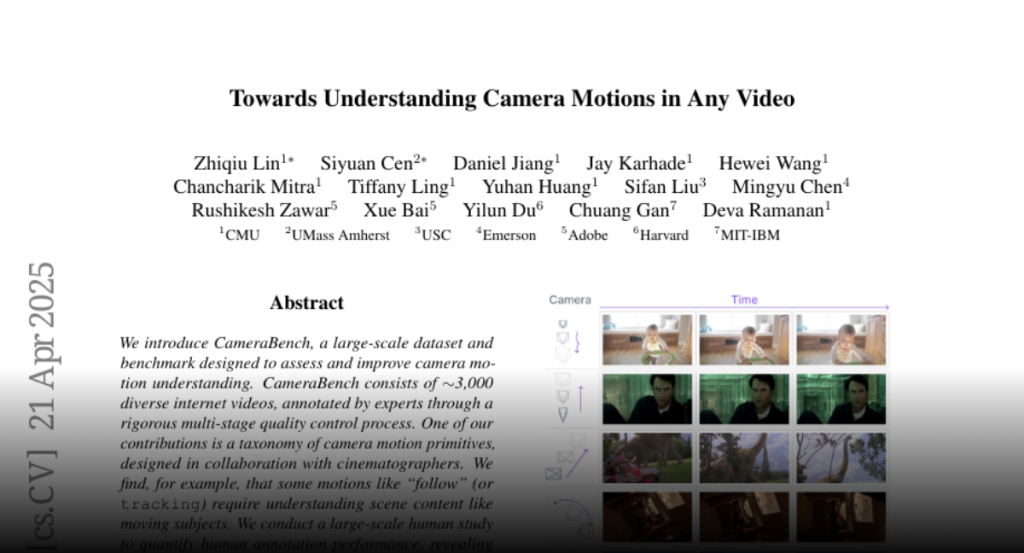We introduce CameraBench, a large-scale dataset and benchmark designed to
assess and improve camera motion understanding. CameraBench consists of ~3,000
diverse internet videos, annotated by experts through a rigorous multi-stage
quality control process. One of our contributions is a taxonomy of camera
motion primitives, designed in collaboration with cinematographers. We find,
for example, that some motions like “follow” (or tracking) require
understanding scene content like moving subjects. We conduct a large-scale
human study to quantify human annotation performance, revealing that domain
expertise and tutorial-based training can significantly enhance accuracy. For
example, a novice may confuse zoom-in (a change of intrinsics) with translating
forward (a change of extrinsics), but can be trained to differentiate the two.
Using CameraBench, we evaluate Structure-from-Motion (SfM) and Video-Language
Models (VLMs), finding that SfM models struggle to capture semantic primitives
that depend on scene content, while VLMs struggle to capture geometric
primitives that require precise estimation of trajectories. We then fine-tune a
generative VLM on CameraBench to achieve the best of both worlds and showcase
its applications, including motion-augmented captioning, video question
answering, and video-text retrieval. We hope our taxonomy, benchmark, and
tutorials will drive future efforts towards the ultimate goal of understanding
camera motions in any video.

